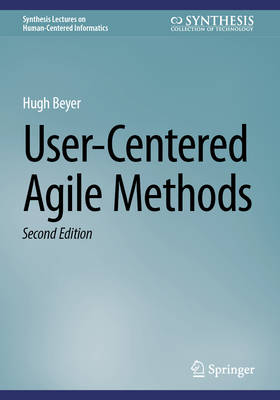
- Afhalen na 1 uur in een winkel met voorraad
- Gratis thuislevering in België vanaf € 30
- Ruim aanbod met 7 miljoen producten
- Afhalen na 1 uur in een winkel met voorraad
- Gratis thuislevering in België vanaf € 30
- Ruim aanbod met 7 miljoen producten
Zoeken
Omschrijving
This book is an up-to-date exploration of the relationship between user-centered design and Agile development. It offers readers a framework for understanding how user-centered design fits into the overall structure of an Agile project, from deciding what to build through delivery. While the dust may have settled somewhat in the 10 years since the first edition examined the impact of Agile methods on user-centered design, the proper relationship between user research, UX design, specification, and development continues to be a matter of debate. Readers unfamiliar with Agile development will find an orientation to the Agile approach, providing insight into how Agile can both hinder and invite more in-depth user involvement. The book also briefly considers the other side of the equation--the current state of the UX field, the challenges UX designers face, and how UX is working to improve product design. This book is particularly written for the UX practitioners who find themselves struggling to use their unique insights to transform the product and delight the customer, given the constraints of Agile development. It will also benefit the developers, product managers, and other stakeholders who work with such UX teams and have an interest in getting the most out of them.
Specificaties
Betrokkenen
- Auteur(s):
- Uitgeverij:
Inhoud
- Aantal bladzijden:
- 93
- Taal:
- Engels
- Reeks:
Eigenschappen
- Productcode (EAN):
- 9783032039736
- Verschijningsdatum:
- 12/11/2025
- Uitvoering:
- Paperback
- Formaat:
- Trade paperback (VS)
- Afmetingen:
- 168 mm x 240 mm
- Gewicht:
- 219 g

Alleen bij Standaard Boekhandel
+ 100 punten op je klantenkaart van Standaard Boekhandel
Beoordelingen
We publiceren alleen reviews die voldoen aan de voorwaarden voor reviews. Bekijk onze voorwaarden voor reviews.








